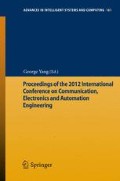Abstract
For the 110kV and above high-voltage overhead lines combined with underground power cables, a set of adaptive reclosure technology is developed based on travelling wave principle. Firstly, the fault section is determined on line by comparing the time difference between the arrival time of the fault induced initial travelling wave detected at two ends of the combined line with a setting value. Then, according to the different fault section, the corresponding reclosure blocking logic is determined, i.e. the reclosure blocking logic is activated if and only if the fault occurs inside the underground cable section of the combined line. In order to test the validity of the presented adaptive reclosure technology, an adaptive reclosure control system is developed based on double-ended travelling wave principle for an actual combined line. In the system, one reclosure control unit is installed at each terminal of the combined line and synchronized by a GPS based power system synchronous clock. The two reclosure control units can communicate with each other through 2M multiplexing optical-fiber channel. At each terminal of the combined line, the reclosure control unit has a reclosure blocking contact signal output (open normally) which is parallel connected to the two ends of the blocking autorecloser hard strap on the protective relaying cabinet for the combined line. Simulation test and actual operation experience show that the adaptive reclosure control technique for HV combined lines based on double-ended travelling wave principle is feasible.
Access this chapter
Tax calculation will be finalised at checkout
Purchases are for personal use only
Preview
Unable to display preview. Download preview PDF.
References
Ge, Y.: New Types of Protective Relaying and Fault Location Theory and Techniques, 2nd edn., pp. 301–335. Xi’an Jiaotong University Press, Xi’an (2007)
Xu, B., Li, J., Chen, P., et al.: Modern traveling wave based fault location technology and its application. Automation of Electric Power Systems 25, 62–65 (2001)
Lee, H., Mousa, A.M.: GPS traveling wave fault locator systems: Investigation into the anomalous measurements related to lightning strikes. IEEE Trans. Power Delivery 11, 1214–1223 (1996)
Gale, P.F., Taylor, P.V., Naidoo, P., et al.: Traveling wave fault locator experience on Eskom’s transmission network. In: Proc. 2001 Seventh International Conference on Developments in Power System Protection, pp. 327–330 (2001)
Jian, Q., Zhen, H., Hua, Y., et al.: Study on traveling wave propagation in double-circuit parallel transmission line. Proceedings of the Chinese Society of Electrical Engineering 24, 30–34 (2004)
Ji, T., Xue, Y.-D., Sun, T.-J., et al.: Fault location for distribution feeders based on traveling waves. Automation of Electric Power Systems 29, 66–71 (2005)
Xue, Y.-D., Xu, B.-Y., Li, J., et al.: Traveling waves based fault location in 10 kV automatic blocking and continuous railway power lines. Automation of Electric Power Systems 30, 68–73 (2006)
Chen, P., Xu, B., Li, J., et al.: Development of modern traveling wave based fault location system. Automation of Electric Power Systems 27, 81–85 (2003)
Chen, P., Xu, B., Li, J.: The Optimized Combination of Fault Location Technology Based on Traveling Wave Principle. In: Proceedings of Asia-Pacific Power and Energy Engineering Conference, APPEEC 2009, Wuhan, China, March 28-31, pp. 28–31 (2009)
Author information
Authors and Affiliations
Editor information
Editors and Affiliations
Rights and permissions
Copyright information
© 2013 Springer-Verlag Berlin Heidelberg
About this paper
Cite this paper
Haitao, Z., Ping, C., Li-Ping, W. (2013). Adaptive Reclosure Technology for High-Voltage Overhead Lines Combined with Underground Power Cables Based on Travelling Wave Principle. In: Yang, G. (eds) Proceedings of the 2012 International Conference on Communication, Electronics and Automation Engineering. Advances in Intelligent Systems and Computing, vol 181. Springer, Berlin, Heidelberg. https://doi.org/10.1007/978-3-642-31698-2_21
Download citation
DOI: https://doi.org/10.1007/978-3-642-31698-2_21
Publisher Name: Springer, Berlin, Heidelberg
Print ISBN: 978-3-642-31697-5
Online ISBN: 978-3-642-31698-2
eBook Packages: EngineeringEngineering (R0)

